E-bikes are fun, they’re useful, and they help riders cover more ground more quickly than any other kind of bike. These days, there are e-bikes for every activity, from commuting and fitness to hauling cargo, from road and gravel riding to mountain biking. Here’s what you need to know before you buy an e-bike.
Editor’s note: Prefer to jump straight to our field-tested favorites? Click here.
E-bike Classification
Regardless of what an e-bike is designed to do, it has a classification based on how fast it goes and how it accelerates, with pedal assist only or with a throttle. The Bicycle Product Suppliers Association (BPSA) classifies e-bikes based on the top speed at which the e-bike motor assists you, and how much effort it takes to get the bike up to speed. An e-bike’s classification determines if you can ride your e-bike on bike paths and in bike lanes, though e-bike laws vary by state. Class 1 e-bikes are pedal-assist only, with a maximum assisted speed of 20 mph. Class 2 e-bikes are throttle-assisted with a maximum speed of 20 mph. Class 2 e-bikes carry the most restrictions. Class 3 e-bikes are pedal-assist with a maximum assisted speed of 28 mph. Pedal assist e—bikes can be pedaled faster that the speed at which they are governed, but the extra speed has to come from the riders legs and/or gravity, not the bike motor.
The Battery, Motor and Power Management
An e-bike’s battery, motor and power management system all determine how the bike rides. E-bike motors vary by motor location and type, wattage and weight. For the most part, you get what you pay for. More expensive systems usually have better battery management for more range, and the motor integrates with the battery and the bike for smoother, lurch-free pedaling.
Most e-bike motors are mid-drive mounted, attached to the frame near the crank arms. Hub-drive motors mount to either the front or rear wheel and sit inside the wheel hub. Mid-drive motors sense your pedaling cadence and torque and they respond with an appropriate amount of electric assist that feels natural. They’re the most common style of motor, and quieter and more stable than hub-drive motors. Hub-drive motors are integrated into a front or rear wheel, and they kick in responding to your cadence, which is tracked by a pedal-based sensor. They can feel like they’re pulling or pushing you, depending on which wheel they’re installed in. Some hub drive motors can be installed on your existing bike. Most e-bikes come with mid-drive motors, which are less expensive. The more watts a motor has, the more power it has to propel the bike forward. And the more watt hours, the stronger and longer the e-bike can supplement that power. Think of it this way: a fit bicyclist can produce 250 watts for an hour while pedaling hard. An e-bike with a 500-watt-hour motor can put out 500 watts for an hour.
E-bike batteries are either removeable or integrated into the frame. If they’re removable, that means you can lock up your bike outside and bring the battery inside to recharge. Many bike tour companies have bikes with a removable battery because that means that when the battery is low or dead, it can be swapped for a fresh one while you make a pit stop. In bikes that have Fazua’s integrated removable battery and motor in the downtube, the power center can be removed and replaced with a dummy, turning the e-bike into a regular bike and dropping seven or eight pounds.
Assess an e-bike’s battery life to meet your needs. Battery life per charge ranges from 30 miles to 90 miles. A physically larger battery will be heavier, making the bike heavier. Smaller batteries may not give all riders enough assist. Some riders, particularly road and gravel riders, prefer batteries integrated into the downtube that draw less attention because they look like part of the bike. Battery recharge times are all over the map. Before you buy, think about your own habits, and buy a bike that will get you to and from the places you want to ride. Remember that if your ride is hilly, you’ll be burning more battery per mile than if your ride is flat. The higher the watt hours, the more battery capacity. Many e-bikes come with a handlebar-mounted computer that has a battery monitor, or they’ll have a companion app to let you know your bike’s range. Choose the lowest assist level—most bikes have at least three options—for the longest range.
The Drivetrain
As with any bike, there are a wide range of drivetrains on e-bikes ranging from very affordable to super high end. As you might expect, the most affordable drivetrains are heavier and do not operate as precisely. Higher-end drivetrains will be lighter, more responsive and they will likely wear longer. They often offer a wider range of gears, smoother shifting and the prospect of less maintenance.
Other Features
Many e-bikes have integrated bells and whistles like lighting, an integrated computer and an integrated lock. Many pair with an app that gives you GPS tracking and lets you monitor battery life and track miles traveled, calories burned and more. Integrated racks will help you carry gear, though some e-bikes also have mounts for an after-market rack. If you plan to add a rack, make sure it’s wide enough to fit your bike, particularly if your bike is hub drive.
It’s worth noting that e-bikes are typically heavier than normal bikes and they run at higher torque, or power and speed, than most riders create when they just pedal. So they tend to come with heavier-duty tires and brakes. Consequently, you may need a beefier rack if you want to transport them on your car.
While not a necessity, many e-bikes will offer a way to monitor and adjust your e-bike right from your handlebars. Integrated backlit bike computers often allow you to keep an eye on crucial stats like battery life remaining, pedal-assist level, miles ridden, current speed and more; you can also fine-tune your settings if you want to prioritize battery life or activate a throttle assist.
Rules of the Road
The best website for more information on e-bike rules and regulations in your state is peopleforbikes.com, a non-profit working to clarify e-bike rules and regulations by state as well as at the federal level. Click on your state, and the site will give you suggested rides as well as an overview of pedal assist bike legislation.
Our Picks
Nakto Cargo Electric Bicycle
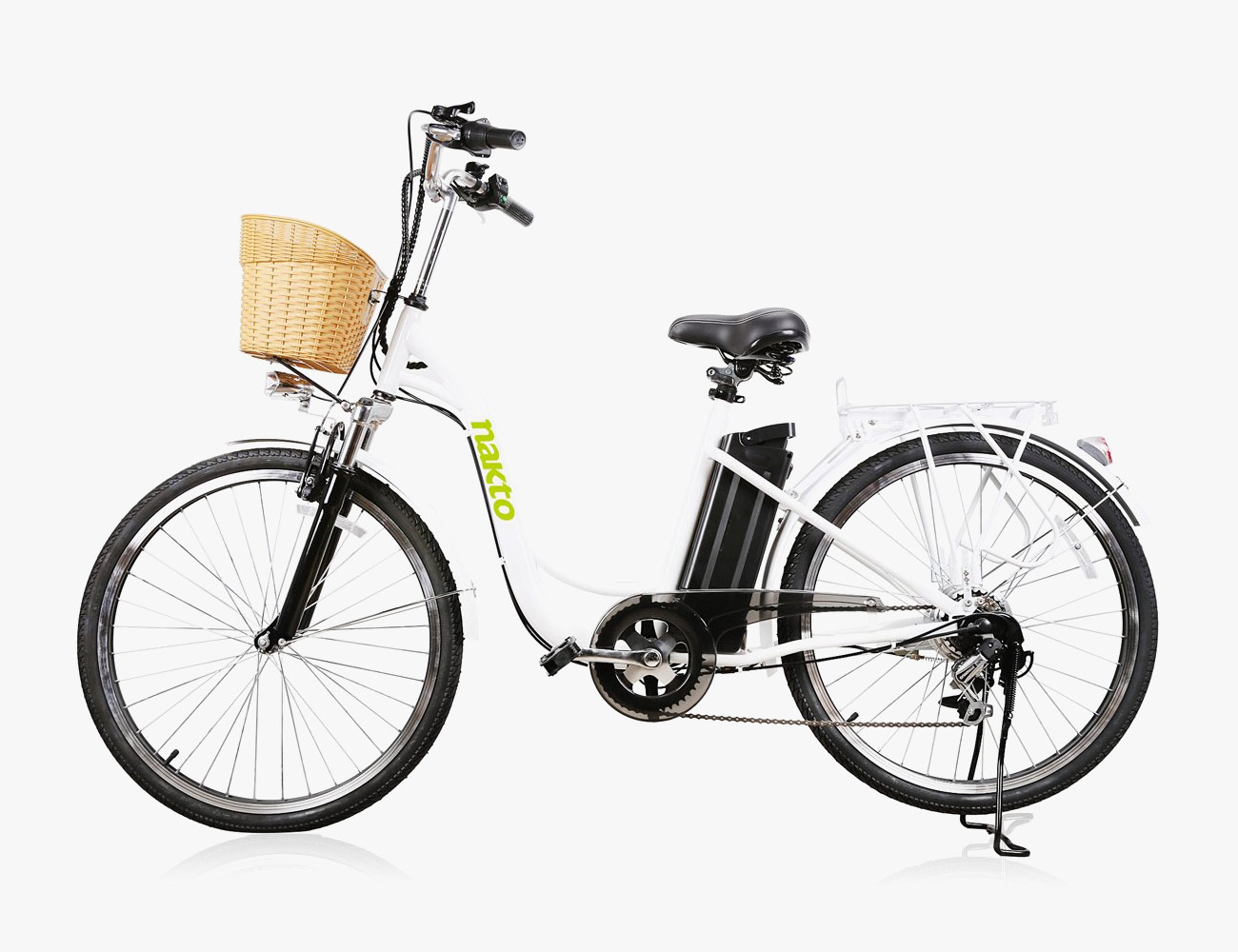
Best e-Bike Under $1000: The carbon steel, step through Nakto uses pedal assist and throttle to power the bike forward. The removable lithium battery has a range of around 25 miles. A front basket and rear rack provide cargo capacity, and an included toolkit helps you make minor adjustments and repairs. Most bikes have disc brakes. This one has more affordable v-brakes in front and a rear drum brake. But you can’t beat the price.
Class: 3
Watt Hours: not available
Weight: not available, but heavier than other bikes in this review
Range: 20-25 miles
Bulls Grinder Evo
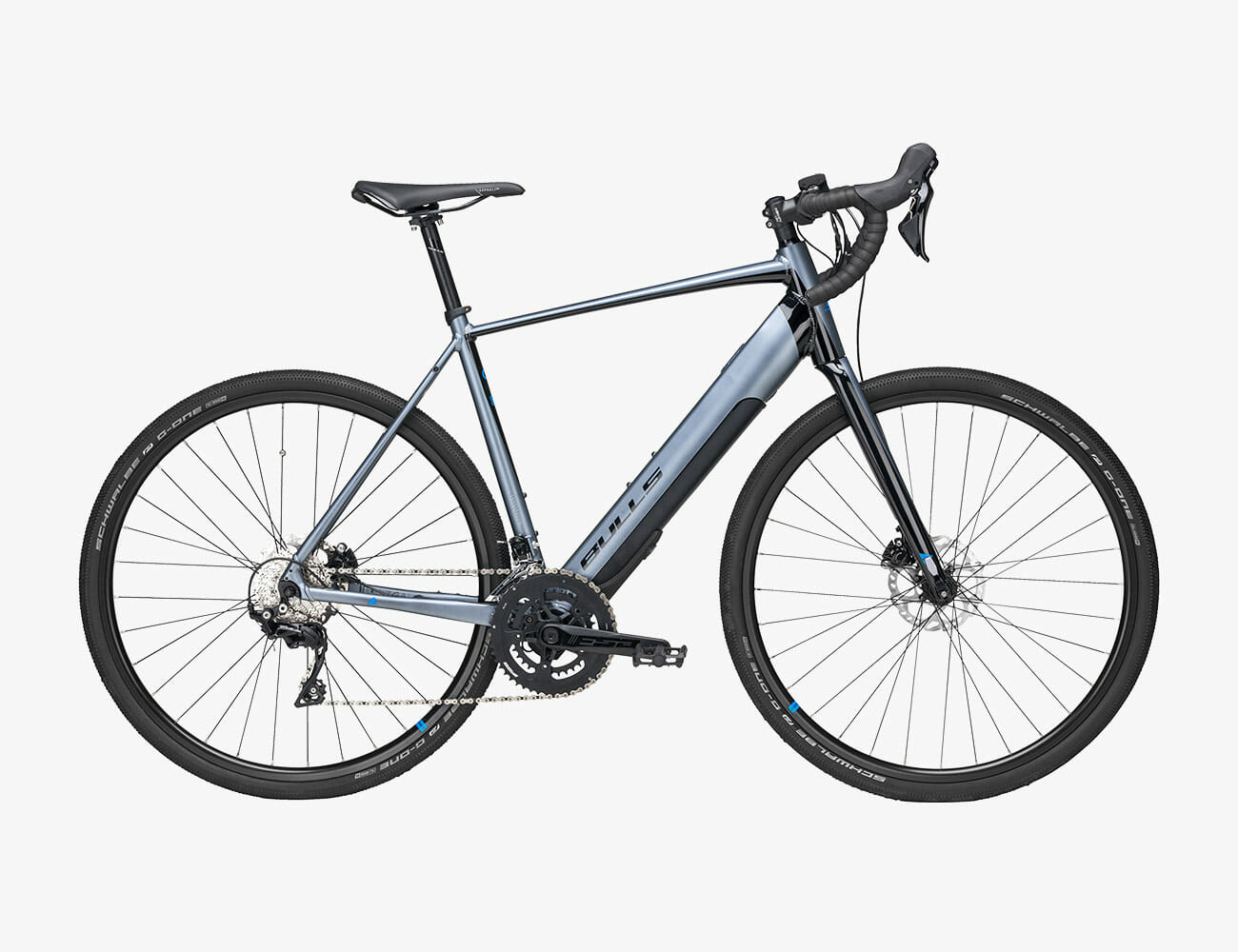
Best for Gravel: This gravel grinder has all the features you’d expect: drop bars, aggressive puncture resistant tires and a spring suspension fork with preload adjust and lockout to manage jouncy, bouncy roads. And it gives you a boost with its Bosch Performance Line CX drive unit and downtube integrated Bosch PowerTube battery pack. That leaves plenty of space for bottle cages on the outside, and wires for the integrated lights inside. A 2×11-speed drivetrain, powerful Shimano hydraulic brakes with 180mm rotors, and alloy fenders and rack sets you up for long adventures, speedy backroads supermarket runs and more.
Class: 3
Watt Hours: 500
Weight: 36.8 lbs
Range: Not available
Specialized Turbo Creo SL Expert Evo
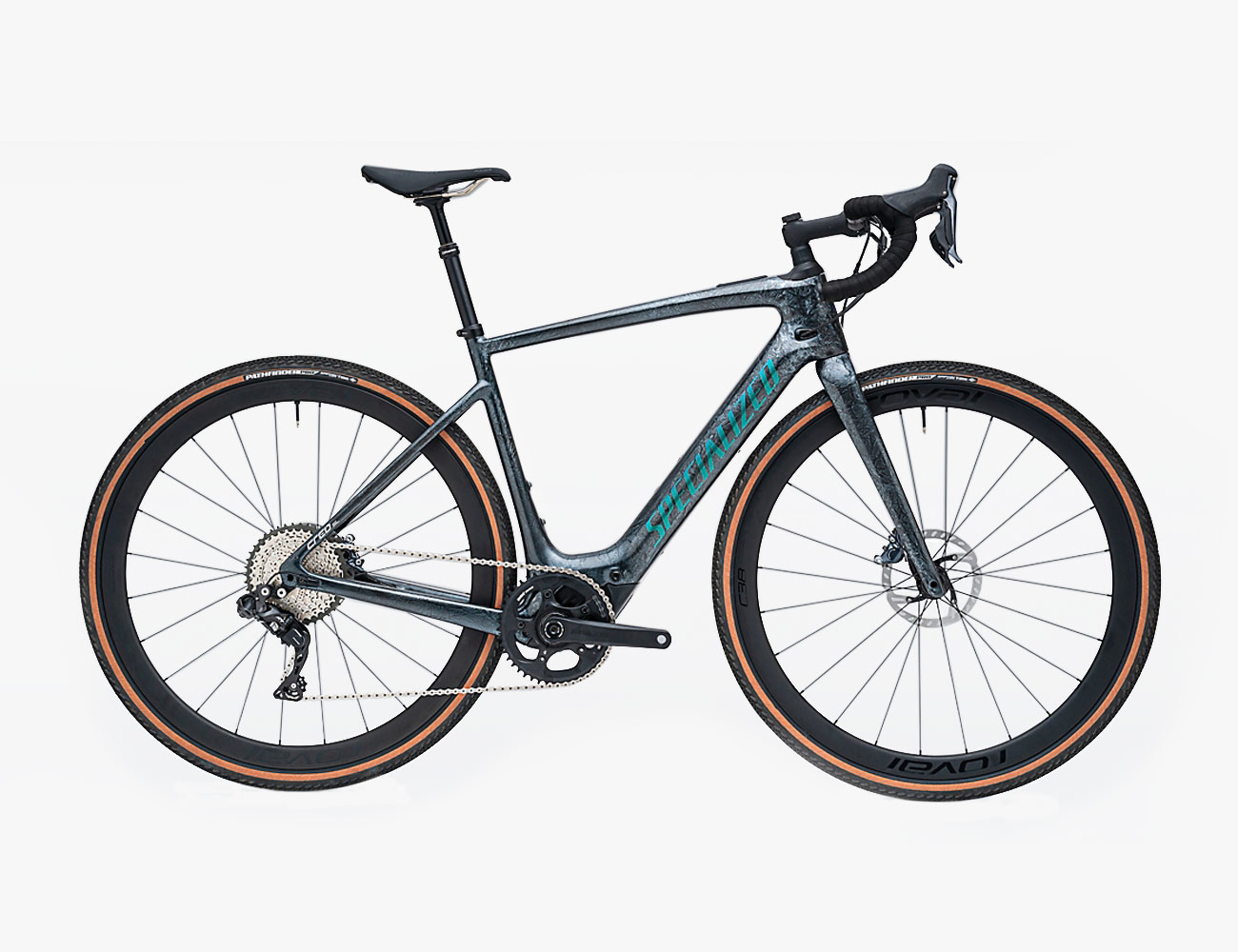
The Best e-Road Bike: As light as a non-electric road bike, this lightning-fast skinny tire e-bike runs on an internal 320Wh battery that combines with Specialized range extending 160Wh battery, stock on some models, to give riders an 80-mile range. A small front shock absorbs road shock and potholes. The battery is powerful and charges fast, in around 2.5 hours. Grab a leisurely lunch mid ride, and you can hit the road again with a full tank. Assist modes can be tuned to your preferences using Specialized’s Mission Control app. The app not only records your ride but connects to the bike’s built-in power meter and other sensors.
Class: 3
Watt hours: 320 plus optional 160
Weight: 26.9 lbs (large)
Range: 80 miles
Yamaha Cross Connect
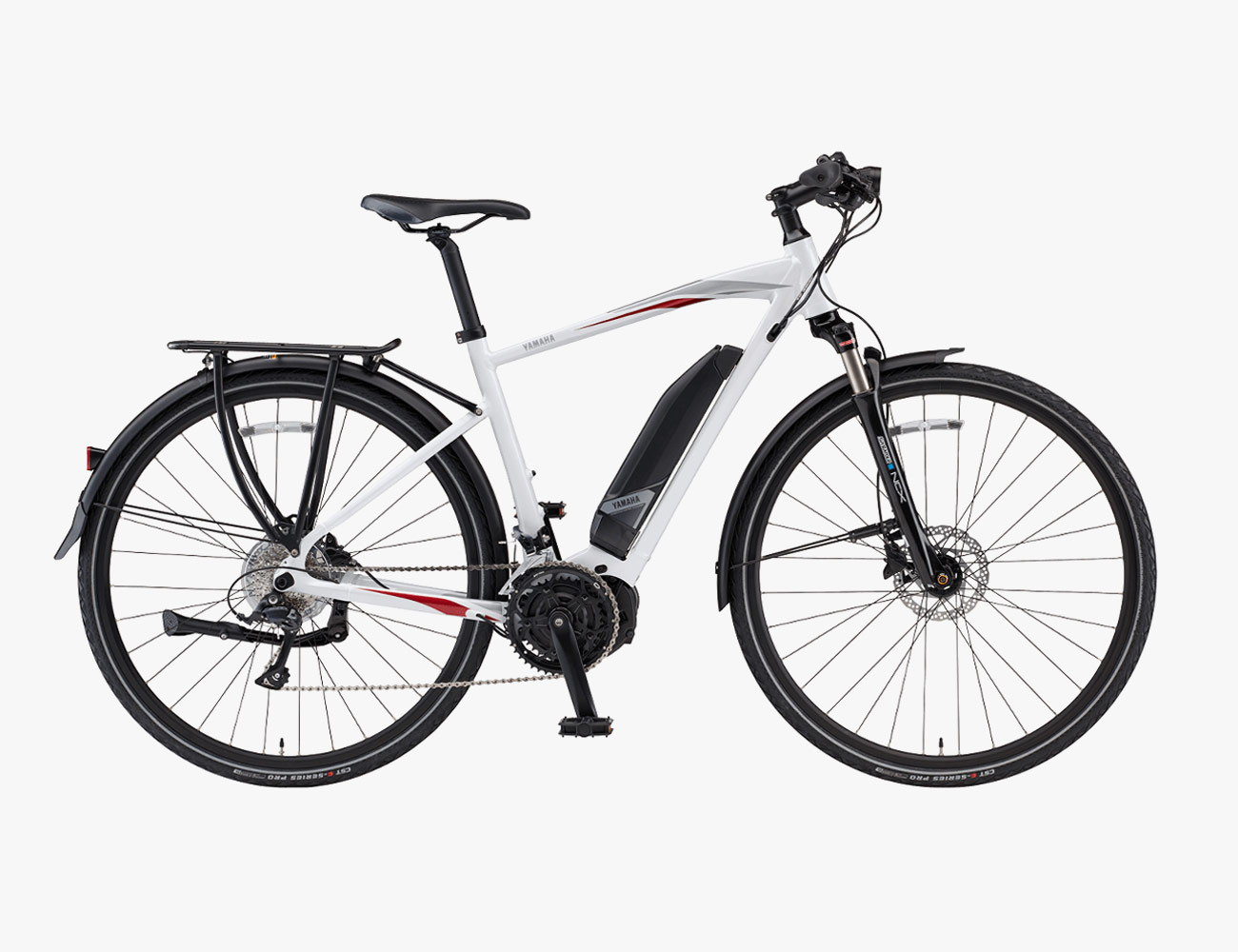
Best for Commuters: This Class 1 flat bar road bike/hybrid bike boasts exceptional stability, as well as responsive brakes and a spot-on power management system with four levels of assist for a natural-feeling ride. Yamaha’s own bottom-bracket integrated drive unit gives the bike a low center of gravity and great handling. The Suntour NCX suspension fork helps smooth out potholed and rough roads, and the rear rack, which has an integrated LED taillight, can handle up to 55 pounds of cargo. The integrated computer provides all your stats, from speed to distance, battery capacity, battery range, cadence, time of day and how long you’ve been riding. A fender, kickstand and LED headlight round out the impressive features.
Class: 1
Watt Hours: 490
Weight: 49.4 lbs
Range: 30-80 miles
Gazelle Cityzen T10 HMB Speed
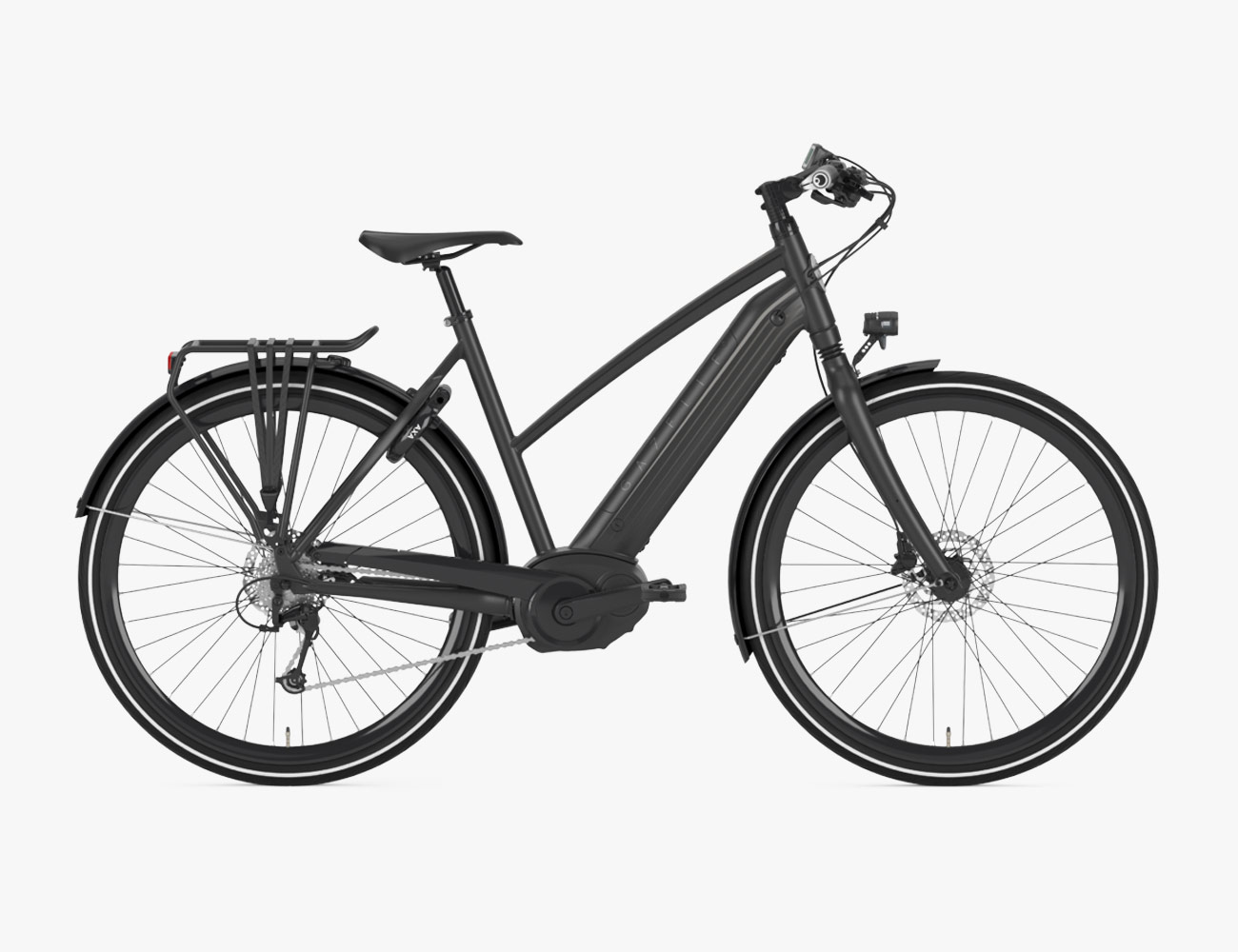
Best for Cruising: Arrive at work in record time on the sleek CityZen. It has all the creature comforts: a front shock, 10-speed Shimano gears and hydraulic disc brakes for responsive stopping. A built-in lock and lights are coffee stop-friendly and easily seen when you work late. And the frame-integrated, pedal-assist Bosch battery goes 28 mph. It’s a sporty and nimble ride thanks to the central-positioned motor and integrated battery; we used the full 85-mile range roaming on weekdays and weekends, too.
Class: 3
Watt Hours: 500wh
Weight: 55 lbs.
Range: 25 miles
Yuba Spicy Curry
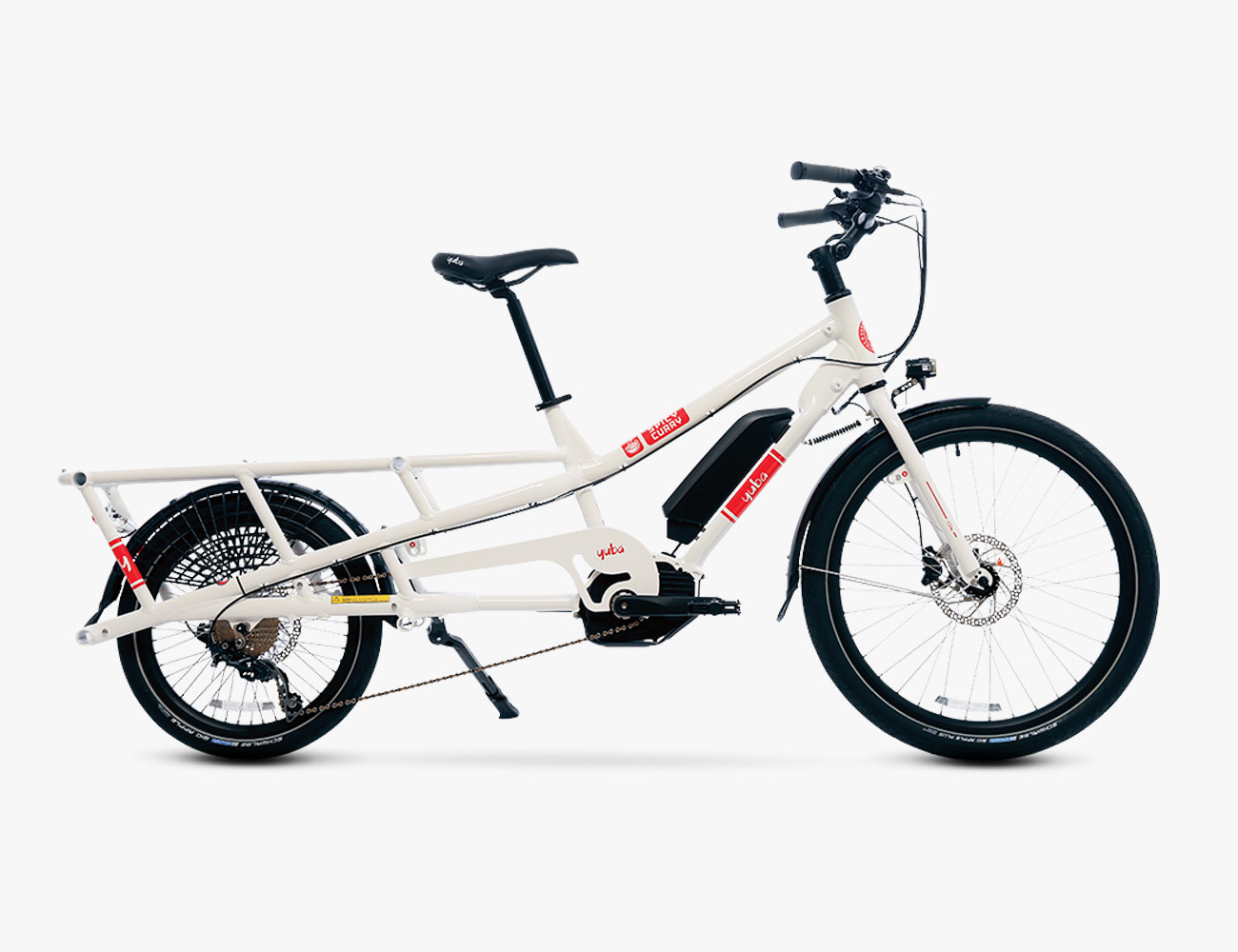
Best for Cargo: This super stable Class 1 Bosch-battery powered e-bike can lug quite a load, whether it’s groceries or your child. The step-through frame makes getting on and off easy, even with a passenger or two in back. The cockpit adjusts as does the seat to fit riders from 5′ to 6’5″. It’s a beast at 60 pounds empty and more than eight feet long, but the battery and motor are designed to handle up to 300 pounds including riders and gear. Hydraulic brakes deliver potent stopping power, even fully loaded, and there’s a walk mode, so if you’re off the bike but still loaded you get an assist moving forward. The Spicy Curry comes with loads of extras like a bell, fenders, LED lights and a chainguard. Add bamboo sideboards, monkey bars to keep kids in, and a front basket and rear panniers for even more carrying capacity. This bike gets about 45 miles per charge loaded, depending on terrain.
Class: 1
Watt Hours: 418
Weight: 60
Range: 15-55 miles
Specialized Turbo Vado
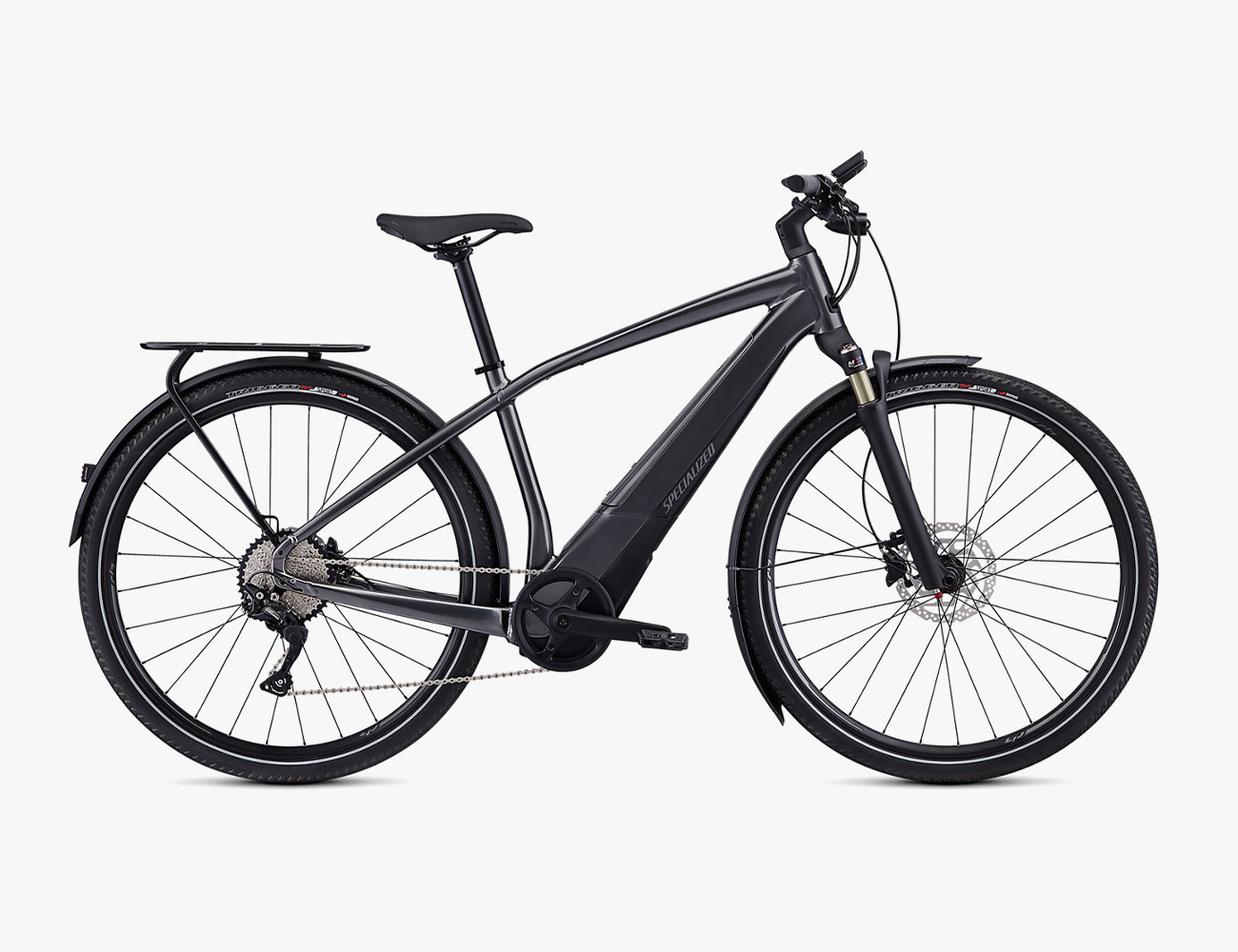
Best Fitness Bike: Specialized designed the Turbo Vado to be a bike first. That means the mechanical system is fully integrated, with internally routed cables and a concealed motor. It’s sleek and uncluttered, and for the most part it looks like a normal bicycle. The 40-cell battery and belt-driven motor, which together power the Turbo Vado to speeds up to 28 mph, is fully incorporated into the downtube of the E5 aluminum frame. Components include an 11-speed Shimano cassette on the highest end build, and front and rear Tektro Zurich custom hydraulic disc brakes. There are also built-in extras, made possible by the electronic system, like a removable handlebar-mounted display and a brake-responsive tail light integrated into the rear rack. The motor has been custom-tuned for city riding. It intuitively reacts to the force of your pedaling, so the harder you pedal, the more power it delivers, smoothly and silently.
Class: 3
Watt Hours: 460
Weight: 54 lbs.
Range: 60 miles
Pivot Shuttle
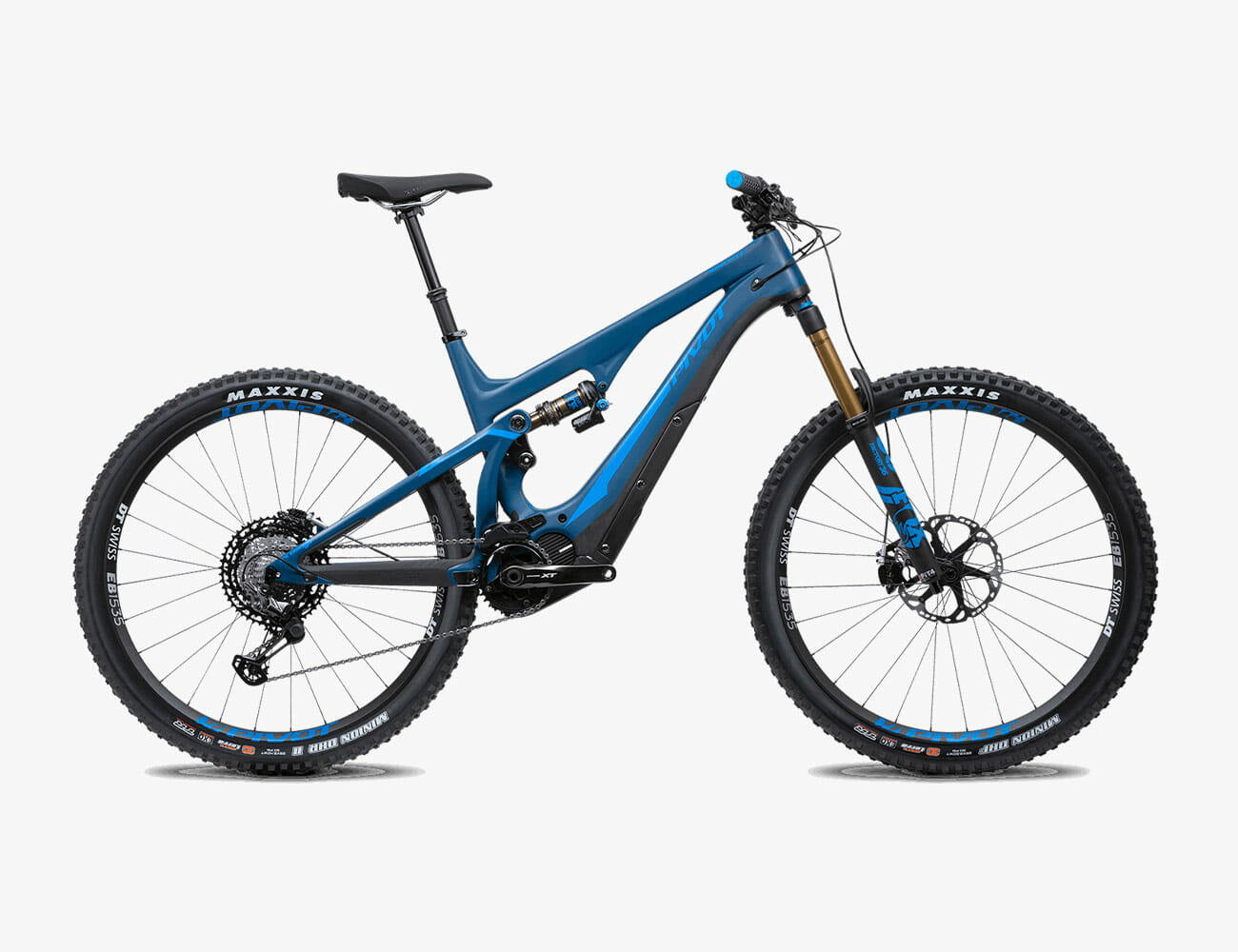
Best for Trail Rides: With the components, kinematics, a full carbon frame and high-end mountain bike component spec, the Shuttle is one of the lightest and most fun pedal assist trail/enduro mountain bikes you can buy. The Class 1 Shuttle has stamina thanks to the Shimano STEPS E8000 battery, and to manage the rocks and roots and drops of trail riding, Pivot spec’d this bike with 140mm Fox DPX2 double barrel rear shocks and a 160mm stiff and responsive Fox 36 fork. It comes with fast rolling 29-inch wheels, but you can also run wider, confidence-inspiring fat tire 27.5-plus wheels if you prefer. This bike fits more riders than any other eMTB, from 5’4″ to 6’7″. And in the unlikely even you aren concerned the carbon gram can’t take a beating, rest easy. It also has a 10-year frame warranty.
Class: 1
Watt Hours: 503
Weight: 44 lbs.
Range: not available
Rocky Mountain Altitude Powerplay Alloy 50
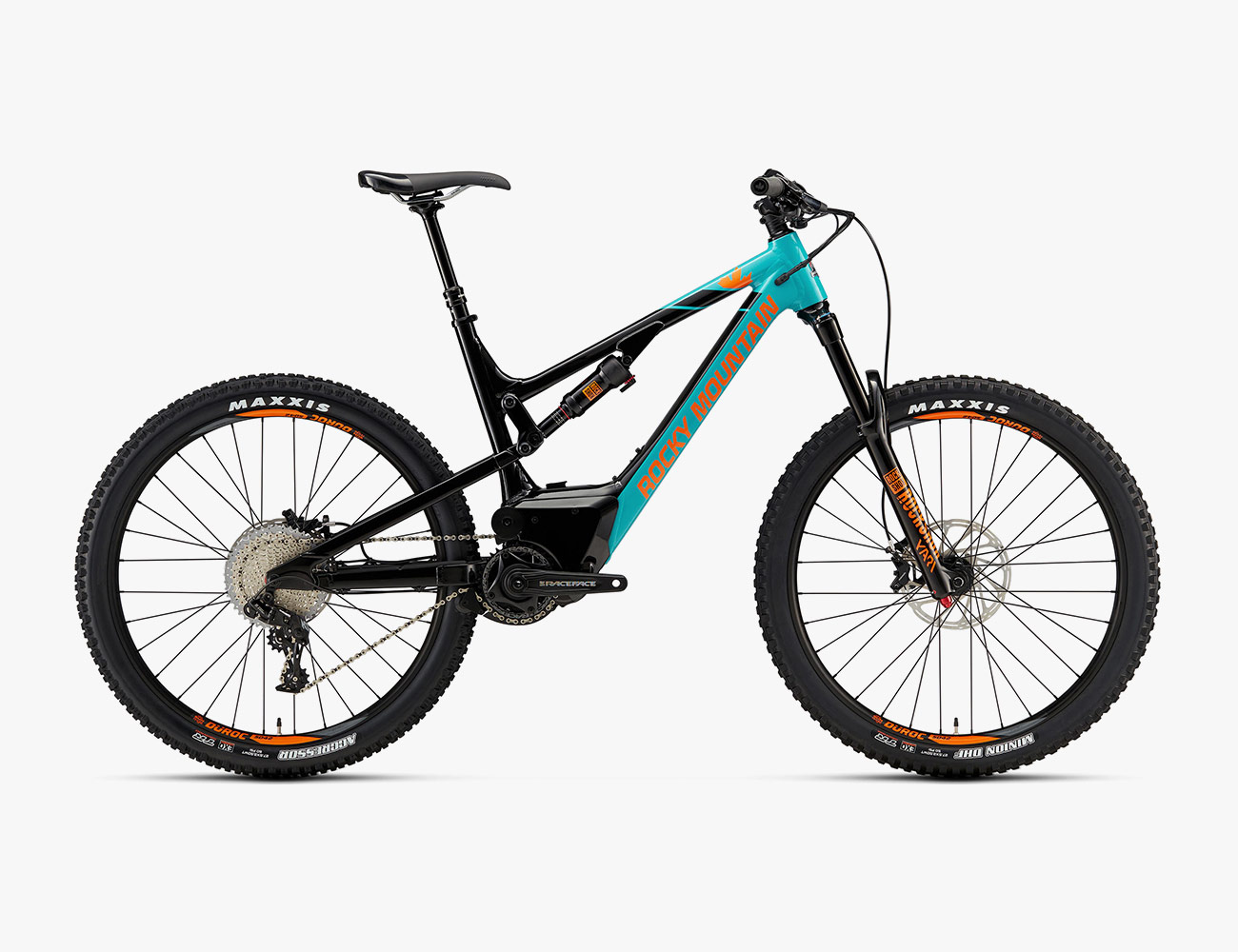
Best for Bike Park Laps: With the same geometry and suspension as the non-assist version, the alloy-frame Powerplay feels like any other mountain bike — albeit a heavier one. The custom and compact Dyname 3.0 motor has tons of torque for acceleration even on the steepest climbs. The company integrated the long-running 630Wh battery into the frame and passes on an LCD display, instead using lights to tell riders what mode they’re in and how much battery remains. Pair the bike with the companion app for more control and information. Short chainstays, 150mm rear travel and 160mm up front make this a great bike for getting in big mountain laps when the lifts are closed.
Class: 1
Watt Hours: 630
Weight: 52 lbs.
Range: not available




